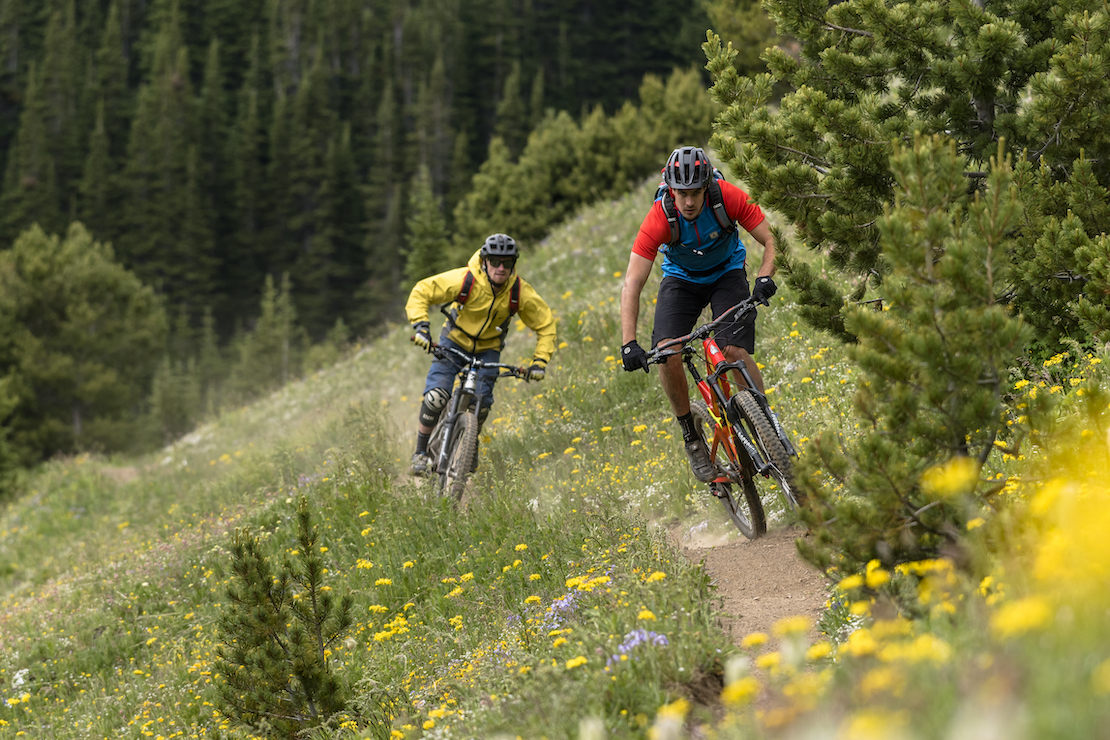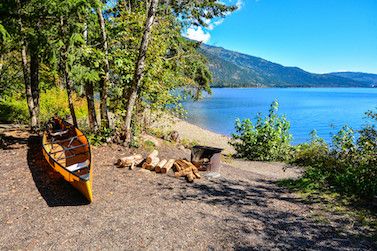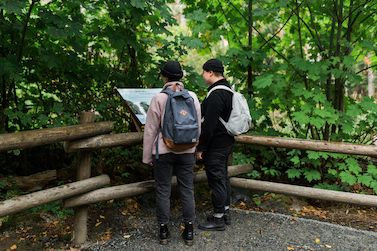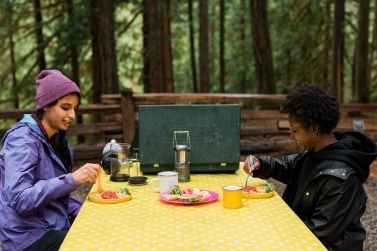British Columbia’s parks offer cycling trails for riders of every skill level. Adventurous cyclists can enjoy scenic rides at BC Parks across the province. Look on this page for information on:
Cycling and camping
Many of the most popular trails in BC Parks are near campgrounds. These campgrounds often have showers to help tired riders freshen up. Some even have pump tracks to help kids build their riding skills.
For information on staying at campgrounds in BC Parks, please visit the camping page. For details of facilities at a specific campground, use our find a park tool to visit the park’s webpage.
Popular cycling destinations
This section highlights some of the most popular and well-maintained areas for cycling in BC Parks. For more detailed information on a specific park’s cycling trails and facilities, click that park’s name to visit its webpage.
This is just a selection of what is on offer. There are practically limitless adventures for cyclists to explore in parks across British Columbia. To see a full list of bike-friendly parks, use our find a park tool and, under ‘activities’, filter by ‘cycling’.
Okanagan: Kettle Valley Railway
The Kettle Valley Railway (KVR) is an abandoned railway bed that winds through southcentral BC and is popular with cyclists. The portion running through Myra-Bellevue Park near Kelowna features extraordinarily dramatic scenery.
Private companies in the area offer bike rentals, guided tours, and shuttle services along this stretch of the KVR. The summer months can be very busy, so advance booking is advised.
Vancouver Island: Goldstream and the Pumphouse
Just 16 km from downtown Victoria, Goldstream Park’s campground offers excellent facilities for bicycle touring, including shower facilities. It also provides a track for kids and 240 m of training loops.
The Pumphouse trail network connects Campbell River’s Snowden Demonstration Forest to a campground in Elk Falls Park. A few kilometres south of Snowden is the Radar Hill trail network, offering intermediate-to-expert trails.
Skeena East: Babine Mountains Park
Some of northern B.C.’s finest mountain biking opportunities are in Babine Mountains Park. The recently upgraded Cronin Mountain Trail provides amazing biking through high alpine regions with spectacular mountain views.
Lower Mainland: Golden Ears Park
The campground at Golden Ears Park includes shower facilities and 20 bike-in campsites. The park offers plenty of great family rides. Downtown Maple Ridge can be reached via a scenic 11 km excursion.
South Coast: Alice Lake Park
Alice Lake Park is an ideal destination for cyclists looking to explore the trails around Squamish. The campground has 12 bike-in campsites plus shower facilities. The park also features several multi-use trails.
Kootenay: Mount Fernie Park
The Fernie area offers six multi-use trail networks. These can be accessed from Mount Fernie Park, and some of the easier trails are within the park itself. The park’s campground offers shower facilities and bike-in campsites.
To see a full list of bike-friendly parks, use our find a park tool and, under ‘activities’, filter by ‘cycling’.
Mountain biking
British Columbia’s provincial parks offer an abundance of mountain biking trails for riders of every skill level. Beginners can meander through grasslands or glide through lush rainforests. There are also plenty of rocky slopes and steep drops for more advanced riders.
Designated mountain biking trails are usually outlined on signs and maps at major trailheads. To see a full list of mountain bike-friendly parks, use our find a park tool and, under ‘activities’, filter by ‘mountain biking’.
Some of the most popular mountain biking parks in the province are listed below (click a park’s name to visit its webpage):
- Alice Lake
- Babine Mountains
- Brandywine Falls
- Garibaldi
- Golden Ears
- Mount Fernie
- Mount Seymour
- Pinecone Burke
- Silver Star
- South Chilcotin Mountains
To ensure you have the best possible mountain biking adventure:
- Stick to designated mountain biking trails, which are the only areas in BC Parks where mountain biking is allowed
- Remember that many bike routes are multi-use trails you will be sharing with hikers and possibly horses and their riders
- Check the park’s webpage ahead of time to plan your route and adjust for any trail closures
For more information on keeping bike trails safe for you and other visitors, see riding responsibly, below.
E-bikes
Electric bikes are welcome in many BC Parks. E-bike usage is regulated to help minimize any impact on the environment and Indigenous cultural sites. Regulations follow the classification system outlined below.
E-bike rules by class
- Class 1 e-bikes are allowed where cycling is already permitted, unless signs indicate that a trail is closed to e-bikes
- Class 2 and 3 e-bikes are usually allowed where motor vehicles are permitted, such as on roads and off-roading tracks
- Adaptive mountain bikes for people with disabilities are usually allowed in areas designated for Class 1 e-bike use
E-bike classifications
| Class | Maximum speed | Acceleration method |
|---|---|---|
| 1 | 32 km per hour | Pedal-assist |
| 2 | 32 km per hour | Pedal-assist or throttle |
| 3 | 45 km per hour | Pedal-assist or throttle |
Parks may have additional e-bike regulations, due to specific environmental or cultural concerns. Use our find a park tool to check the park’s webpage before heading out.
Riding responsibly
Everybody using bike trails in BC Parks is expected to follow a few basic rules of cycling etiquette. These will help keep you and other visitors safe, while minimizing your impact on the natural environment.
Stick to designated cycling trails and respect trail closures
Use our find a park tool to check the park’s webpage for information and updates before you head out. Watch for relevant signage at the trailhead when you arrive and throughout the trails as you ride.
Stay alert and watch for wildlife, especially bears
Ride cautiously in areas of known animal activity, near streams and dense vegetation, on windy days, and when approaching corners. Ride slowly, stay alert, and make noise to avoid unexpected encounters.
Pass with care and be courteous
Let hikers, horse riders, and other cyclists know you are coming. If you are going downhill, yield to anyone heading up. Yield to hikers on shared trails. Pass horses with care and follow their riders’ directions.
Do not build unauthorized trails
Never try to create new cycling trails without supervision. Building cycling trails can have serious environmental impacts and safety consequences. Creating new trails is illegal, unless done in partnership with BC Parks.
We partner with volunteer organizations across the province, which provide invaluable trail-building work. To learn more about trail-building partnerships in your area, please contact parkinfo@gov.bc.ca.
Practice responsible recreation
Show respect for the environment and cultural sites in the park you are visiting. Do not litter or leave any food waste behind. Make sure all natural objects and cultural artifacts remain undisturbed for others to discover and enjoy.
For more information on safe, responsible recreation in BC Parks, see the visit responsibly section of this website.




